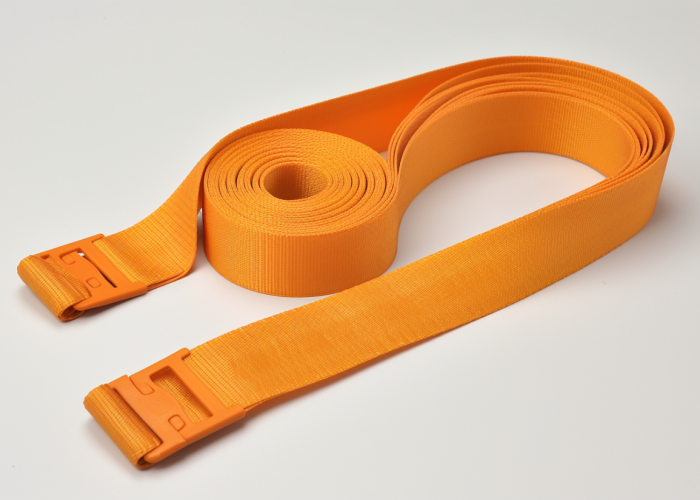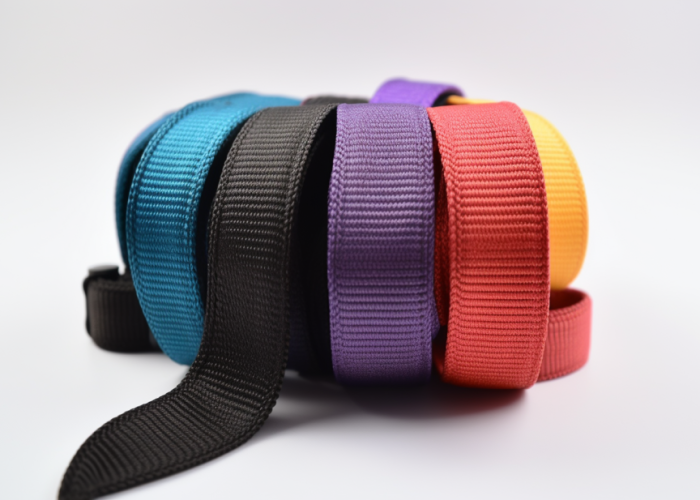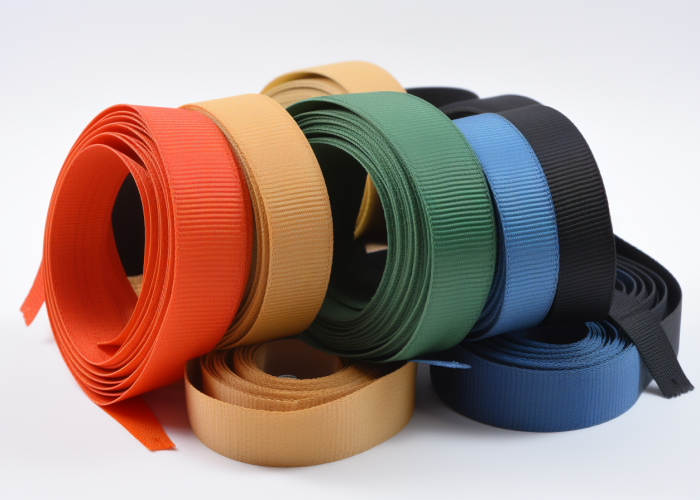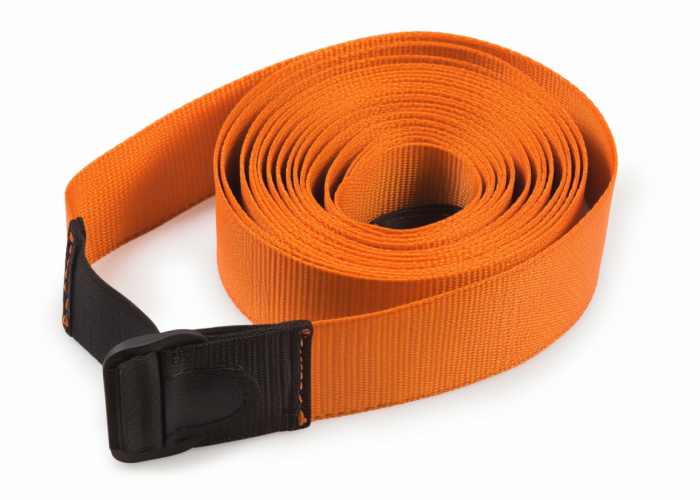Designing effective axle straps requires careful consideration of materials, structural elements, safety requirements, and testing protocols. Engineers and product developers must balance strength, elasticity, durability, and cost factors to create solutions that perform reliably under demanding conditions. As custom webbing manufacturers, we provide specialized expertise to help you navigate these critical design decisions.
Material selection, structural design, safety certification, comprehensive testing, and appropriate documentation are the five critical factors when designing a new axle strap. Material choice significantly impacts performance with nylon providing 20-30% elongation ideal for recovery operations, while structural elements like width directly determine load capacity, with 2-inch webbing supporting 6,000-8,000 pounds in flat construction. Safety standards require a minimum 5:1 safety factor, validated through static loading to 200% WLL and cyclic testing for 10,000 cycles at 50% WLL.
Discover material trade-offs, durability features, and customization options with detailed specs to help you choose the right solution for your application.


Webbing manufacturing expert with 15+ years of experience helping product developers build high-performance straps for industrial, medical, and outdoor use.
Nylon is the optimal material for axle straps due to its 20-30% elongation capability, high tensile strength of 6,000-12,000 pounds per 2-inch width, and excellent shock absorption properties. This superior elasticity makes nylon particularly valuable for recovery operations where controlled energy dissipation prevents dangerous snapback while maintaining structural integrity under dynamic loads.
Key Material Considerations at a Glance:
Quality nylon webbing outperforms most metal alternatives while maintaining necessary flexibility for practical field use. As custom webbing manufacturers, we’ve found nylon’s elasticity provides critical shock absorption during recovery operations, while our polyester options better suit static applications requiring minimal stretch.
Environmental durability can be enhanced through specialized manufacturing processes. Our water-repellent treatments maintain 90-95% strength when wet, while UV inhibitors protect against solar degradation—addressing nylon’s natural limitations compared to polyester.
Construction significantly impacts performance. Custom tubular webbing offers superior abrasion resistance for applications where straps contact rough surfaces. We work with product developers to engineer hybrid constructions using a nylon core for controlled stretch and a polyester outer sheath for UV and abrasion protection. These specialized edge treatments prevent fraying and extend service life under demanding conditions.
Structural design significantly impacts axle strap performance, with width being the primary determinant of strength capacity, followed by thickness, edge treatment, reinforcement methods, and load distribution features. A properly designed 2-inch wide axle strap typically provides 6,000-8,000 pounds breaking strength in flat construction, while custom 3-inch designs can achieve up to 20,000 pounds for heavy-duty recovery applications.
Key Structural Design Factors at a Glance:
Width selection directly correlates with load capacity. Each half-inch increase provides approximately 25-30% additional strength, making this a critical engineering decision for product developers. Our manufacturing supports custom widths from 1-inch for light-duty to 4-inch for extreme recovery operations.
Thickness and weave density affect flexibility and strength. Denser weaves create stiffer, stronger webbing for shorter straps, while medium-density weaves offer better flexibility for applications requiring storage. Our custom manufacturing can optimize both factors based on specific performance requirements.
Edge treatment significantly extends service life. Selvage edges resist fraying substantially better than cut edges. For custom applications, we apply heat-sealed or sewn edge treatments that provide similar durability while meeting exact dimensional specifications.
Reinforcement prevents failure at stress points. Our engineering team implements techniques including double-layering, strategic bar tacking, and specialized stitching that typically add 30-40% strength where needed. These reinforcements maintain integrity even if partial damage occurs.
Load distribution features enhance safety and component longevity. Tapered designs (where webbing gradually widens near attachment points), specialized stitching patterns, and engineered flexibility zones reduce peak stresses during dynamic loading events – particularly valuable for recovery straps experiencing sudden shock loads.

Axle straps must meet standards including WSTDA-T-1, SAE J684, ISO 2307, and MIL-W-4088 which establish minimum Working Load Limits (WLL) at approximately 20% of breaking strength and require safety factors of 5:1 for critical applications. These standards also mandate specific labeling requirements including maximum WLL, manufacturing date codes, and appropriate warning information to ensure proper use and prevent accidents.
Key Safety Standards at a Glance:
Width Flat Construction Breaking Strength Tubular Construction Breaking Strength Typical Working Load Limit
1-inch 3,000–4,000 lbs 5,000–6,000 lbs 600–1,200 lbs
2-inch 6,000–8,000 lbs 10,000–12,000 lbs 1,200–2,400 lbs
3-inch 12,000–16,000 lbs 16,000–20,000 lbs 2,400–4,000 lbs
4-inch 16,000–20,000 lbs 22,000–28,000 lbs 3,200–5,600 lbs
Working Load Limit requirements vary by application but must be clearly established. For passenger vehicle recovery, WLLs typically range from 1,200-2,400 pounds for 2-inch straps. Our testing validates these ratings through static load testing to 200% of WLL and destruction testing to determine breaking points.
Industry standards ensure proper design application. We maintain full compliance with Web Sling & Tie Down Association (WSTDA) guidelines while helping product developers address requirements beyond baseline specifications.
Comprehensive testing evaluates real-world conditions. Our protocols include cyclic loading, accelerated environmental exposure, temperature extreme verification, and dynamic impact testing for recovery applications – ensuring reliable performance throughout service life.
Quality verification ensures consistent performance across production runs. Our ISO 9001 certified facility implements statistical process control to monitor critical characteristics, giving product developers confidence in consistently meeting specified requirements.
Axle straps require comprehensive testing including static load testing to 200% of WLL, cyclic loading for 10,000 cycles at 50% WLL, dynamic impact testing with sudden loads, and environmental exposure testing before production approval. This multi-stage validation process ensures the finished product will perform reliably under real-world conditions while maintaining appropriate safety margins throughout its service life.
Key Testing Protocols at a Glance:
Simulation methods provide initial design validation. Finite Element Analysis (FEA) modeling identifies potential stress concentrations before physical prototyping begins. Our engineering team can assist product developers with these preliminary assessments, reducing development cycles by identifying and addressing potential issues early in the design process.
Prototype testing bridges the gap between theoretical design and production. We produce limited prototype runs using production-equivalent materials and processes, allowing thorough testing without full-scale manufacturing investment. These prototypes undergo the complete testing regimen to validate both design and manufacturing process suitability.
Quality assurance procedures ensure consistent performance across production runs. Our statistical process control methods monitor critical performance characteristics throughout manufacturing, with regular sample testing to verify continued compliance with specifications. This systematic approach delivers predictable, repeatable performance in the finished product.
Field testing validates real-world performance under actual operating conditions. We collaborate with product developers to establish appropriate field testing protocols that evaluate performance in relevant environments. Instrumented testing provides quantitative data while qualitative assessment identifies usability factors that may not be apparent in laboratory testing.

Effective axle strap compatibility requires appropriate attachment hardware, dimensional consistency with mounting points, and load capacity alignment with the vehicle’s requirements.Universal designs typically incorporate features like reinforced end loops accommodating various hook sizes (⅜” to ⅝”), while application-specific designs may include specialized attachment mechanisms for proprietary connection systems.
Key Compatibility Factors at a Glance:
System compatibility starts with hardware integration. Standard recovery systems typically use hooks with 3/8″ to 5/8″ attachment points, requiring appropriately sized and reinforced webbing loops. Our custom manufacturing capabilities include producing reinforced eyes with specific internal dimensions to ensure proper fit with designated hardware.
Installation requirements affect both user experience and performance reliability. Tool-free designs prioritize quick deployment and universal compatibility, while permanently mounted systems may offer enhanced security at the expense of flexibility. Our engineering team works with product developers to optimize attachment methods based on intended use cases.
Maintenance protocols ensure continued compatibility throughout service life. Clear guidance on inspection frequency, cleaning methods, and retirement indicators helps end-users maintain system integrity. We provide product developers with comprehensive recommendations based on material selection and construction details.
Dimensional consistency is critical for interchangeable components. Our manufacturing processes maintain tight tolerances for width (±1/16″), length (±1%), and reinforcement placement (±1/8″), ensuring reliable fit with mating components. These precise specifications are particularly important for OEM applications where components must integrate with existing vehicle systems.
Quality axle straps require precision weaving with controlled tension, reinforcement with standardized stitch patterns, edge finishing to prevent fraying, and comprehensive quality inspection before shipping. These manufacturing processes ensure consistent performance characteristics while maintaining critical dimensional specifications that affect both functionality and compatibility.
Key Manufacturing Quality Factors at a Glance:
Specialized tooling requirements ensure manufacturing precision. Our advanced weaving equipment maintains consistent tension and density throughout production runs, while specialized sewing fixtures ensure precise reinforcement placement. These purpose-designed tools allow us to manufacture webbing that consistently meets demanding specifications.
Tolerances are tightly controlled throughout the manufacturing process. Standard tolerances for critical dimensions include width (±1/16″), thickness (±10%), breaking strength (±5%), and elongation characteristics (±10%). These tight specifications ensure consistent performance and compatibility across production runs.
Quality control measures verify compliance with specifications. Our standard procedures include incoming material verification, in-process monitoring, final dimensional inspection, batch strength testing, and comprehensive documentation. This systematic approach delivers webbing products that reliably meet or exceed specified requirements.
Production capacity flexibility accommodates varying project needs. From small prototype runs to high-volume production, our manufacturing facilities can scale to meet product developers’ requirements. Typical lead times range from 2-3 weeks for standard constructions to 4-6 weeks for custom designs requiring specialized tooling or setup.

Axle strap customization options include specialized weaving patterns for enhanced performance, custom width and thickness combinations, color and pattern variations for brand identity, and specialized treatments for enhanced durability. These customization capabilities allow product developers to optimize axle straps for specific applications while differentiating their products in the marketplace.
Key Customization Options at a Glance:
Specialized weaving techniques optimize performance for specific applications. Advanced patterns like herringbone provide enhanced grip and reduced slippage, while tubular constructions maximize strength-to-weight ratio. Our engineering team can recommend the optimal weave pattern based on intended use cases and performance requirements.
Width and thickness variations allow precise matching to application requirements. Custom widths from 1″ to 4″ in 1/8″ increments accommodate various load requirements, while thickness options from 1/16″ to 1/4″ balance flexibility and strength. These dimensional options allow product developers to fine-tune performance characteristics.
Color and pattern options support brand identity and functional differentiation. Standard color offerings include high-visibility options for safety applications, while custom color matching services (minimum quantities apply) allow perfect alignment with established brand standards. Reflective elements can be incorporated for enhanced visibility in low-light conditions.
Special treatments enhance performance in challenging environments. Water-repellent treatments maintain strength when wet, UV stabilizers extend outdoor service life, antimicrobial treatments prevent odor development, and specialized coatings increase abrasion resistance. These performance-enhancing treatments address specific challenges in various applications.
Prototype development provides validation before production commitment. Our standard prototyping process delivers sample materials for evaluation within 2-3 weeks after specification approval. This allows product developers to verify performance and appearance before committing to production quantities, reducing development risk.
Designing effective axle straps requires balancing material properties, structural elements, safety standards, testing protocols, and documentation requirements. Each decision directly impacts performance, durability, and safety in real-world applications. Contact us to explore manufacturing solutions tailored to your product requirements.
Our minimum order quantities start at 500 linear feet for custom webbing with standard lead times of 2-3 weeks for regular constructions and 4-6 weeks for specialized designs. Prototype quantities as low as 100 feet are available for testing and validation with a 10-15 business day turnaround. Rush production options can reduce lead times by 30-40% for time-sensitive projects.
Our prototyping process begins with engineering consultation, followed by sample production within 10-15 business days, comprehensive testing, and detailed performance reporting. This collaborative approach allows product developers to validate designs before committing to production quantities. We provide multiple iterations if needed, with each refinement typically requiring 5-7 additional business days.
Nylon offers superior shock absorption with 20-30% elongation but degrades faster in UV exposure, while polyester provides better environmental resistance with only 10-15% stretch. Nylon excels in recovery operations requiring energy absorption, while polyester maintains consistent tension in tie-down applications. Modern manufacturing can apply UV inhibitors to nylon, addressing its primary weakness.
Yes, our production capacity exceeds 50,000 linear feet weekly with scalable operations for high-volume requirements up to 250,000 feet monthly. Our manufacturing facility operates multiple shifts with dedicated production lines for large orders, ensuring consistent quality and on-time delivery even for major product launches or OEM supply contracts.
Yes, we’ve developed specialized axle strap webbing for major off-road equipment manufacturers, recovery gear brands, and military applications with custom strength-to-weight requirements. Recent projects include high-visibility recovery straps with reflective elements, ultra-high-strength webbing for heavy equipment recovery, and hybrid constructions optimizing both stretch and UV resistance for extreme environment applications.
Off-road axle straps require WSTDA-T-1 certification with a 5:1 safety factor minimum and compliance with SAE J684 for automotive towing applications. These standards establish testing protocols, working load limits, and labeling requirements that ensure safe operation under dynamic recovery conditions. Documentation must clearly state both breaking strength and working load limit.